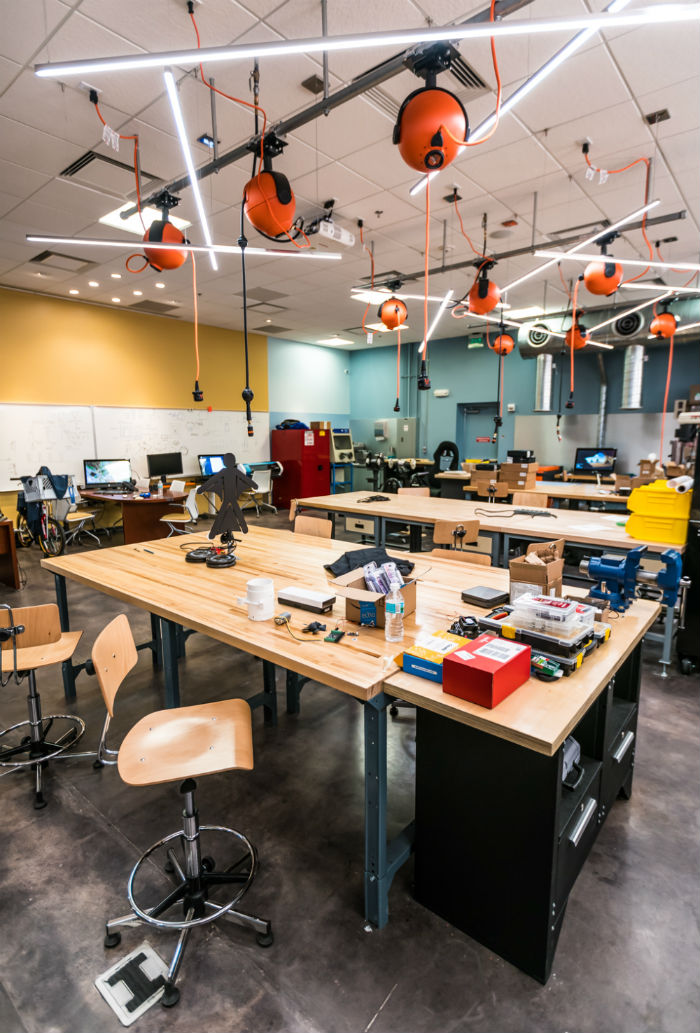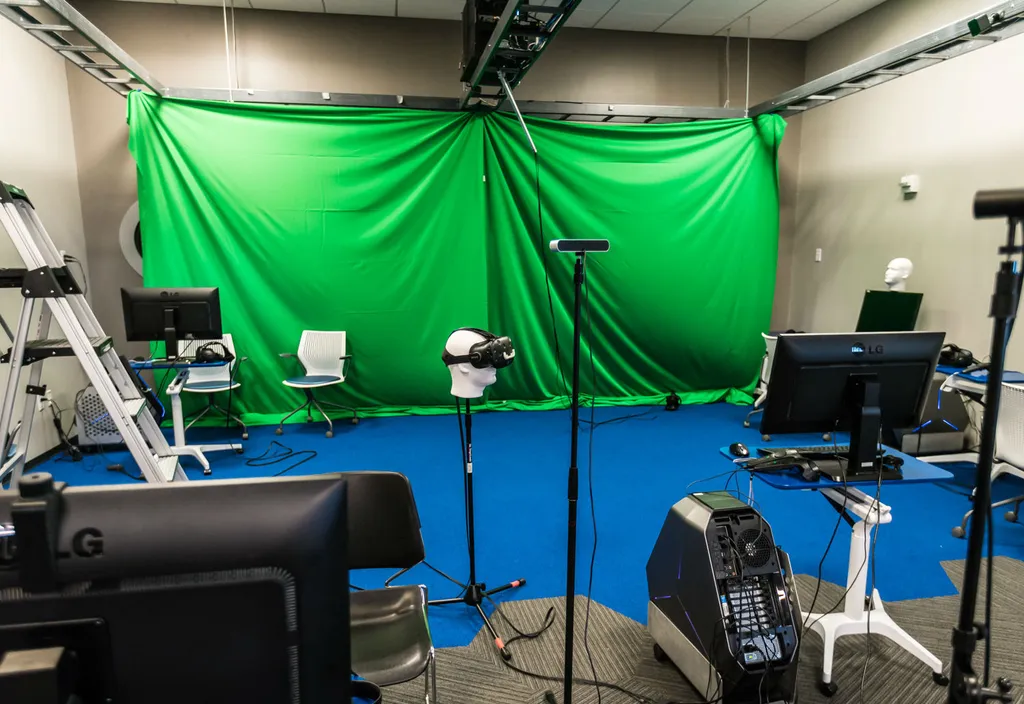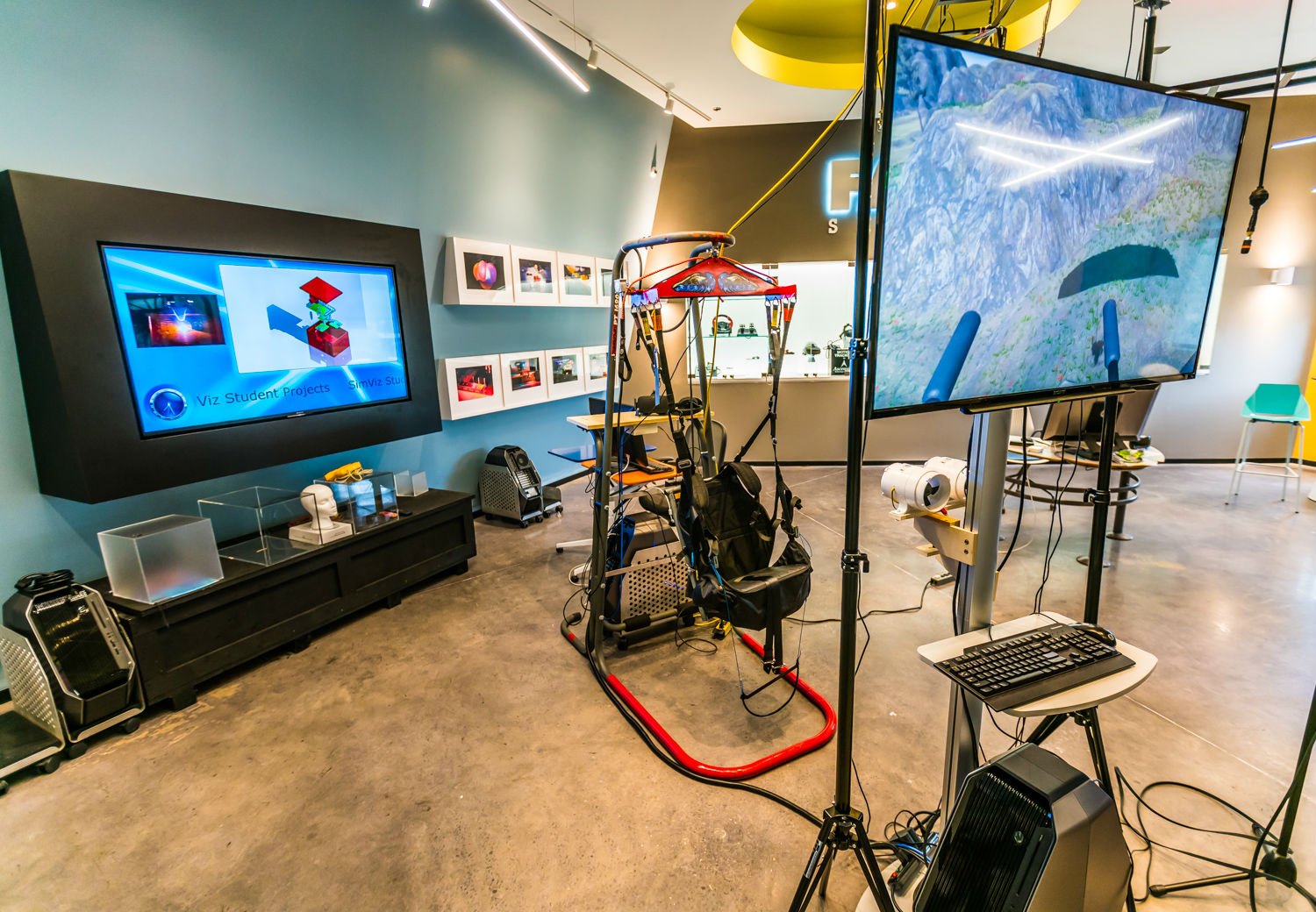“I’ve been in VR for a long time,” says Rob Catto. He tells me that back in 1993 he set up a fully immersive VR lab in the high school where he taught, so it’s not surprising that he believes Virtual Reality and teaching are natural bedfellows, nor that he ended up as the Director of Game Studies & Simulation at Full Sail University. “I actually came here to teach a course in VR, but then it sort of went to sleep, until about four years ago when it came back with a bang.”
Full Sail already had a strong Game Development program, he explains, but with the heightened interest and demand for talent from the industry it made sense to create a course geared specifically toward VR and AR. Their newly launched Simulation and Visualization Bachelor’s – which currently has around 30 registered students – is not for the faint-hearted though. It crams a 4-year multidisciplinary curriculum in 20 insanely intensive months.
During that time, the students hone their coding skills (focusing mainly in C Sharp and C++) and get comfortable using engines such as Unity and Unreal. But that’s only the beginning. The course includes a huge variety of modules such as Data Visualization and Modeling, Artificial Intelligence and Applied Human-Computer Interaction, Linear Algebra, Physics, Computer Networks, and even things like “Historical Archetypes and Mythology,” and “English Composition,” which hint that in order to create immersive experiences you should not only understand the technical side of Virtual Reality, but also get to grips with it as a storytelling medium.

With the increase in popularity of VR and demand for skills in the industry we are certain to see a lot more dedicated courses, as well as impressive content produced by students and alumni such as this cool Harry Potter-based AR project by 21-year-old Asad Malik from Bennington College in Nevada.
“As virtual reality moves more towards the mainstream through the development of new, more affordable consumer technologies, a way needs to be found for students to translate what they learn in academic situations into careers within the industry,” says Frankie Cavanagh, a lecturer at Northumbria University. He founded a company called Somniator last year with the aim not only of developing VR games, but to provide a bridge between higher education and the technology sector. Over 70 students from Newcastle University, Northumbria University and Gateshead College in the UK have been placed so far through the program, working on real games as part of their degrees and getting paid for additional work commissioned. This has already produced some impressive results, as can be seen from the early preview of their first VR release, Dimension Hunter.
But what should those shopping around for a VR degree course be looking for? State-of-the art facilities such as those offered at Full Sail’s “FabLab” or the University of Missouri’s iLab – which currently offers Virtual Reality-related modules as part of its IT program – are certainly desirable, but perhaps more important is an institution’s ability to support the student in building an extremely diverse and ever-evolving skillset, as well as encouraging a collaborative mentality.
Working with VR already translates into an extraordinarily diverse range of possible career paths, and those options are only going to become even broader as the industry matures in the next few years.
“Simulation is becoming a bigger part of almost any industry,” agrees Catto. “There’s urban simulation, military, medical, flight, disaster relief, and then gaming and other entertainment. At its heart, simulation is all about problem solving. Its applications extend to nearly every industry—from safer military training to more efficient medical procedures to better designed parking garages.”
One of the reasons Full Sail is located near downtown Orlando is because of its pedigree as “simulation capital of the world” referring to its tradition in providing R&D and talent for the theme park industry as well as the military and space programs. But for students to be able to solve the problems they will encounter in creating such complex simulations, they need to be taught to conceptualize, design, program and make their own stuff. Which makes for a very different sort of learning environment.
https://youtu.be/_86HKico1K4
“We teach them things such as how to program electronic microcontrollers, then they will work with a solid modeling package in the digital fabrication course. They will use equipment such as the injection molder, a laser cutter, and the milling machine where they will make their own circuit board – which of course they will then program themselves,” explains Catto.
He shows me a 3D-printed box: “This will ultimately be a scent deliverer that will be controlled by a virtual environment. It is easy to focus on the visual aspect of VR, but it’s about much more than just putting on the headset, it’s about all the senses, and what we’re enabling here is rapid prototyping to deliver that.”
Next up he invites me to test-drive one of his own prototype projects – a machine that simulates the experience of Catto’s real-life hobby of powered paragliding. For those not familiar with this activity, it essentially involves a heady mix of flying and parachuting, with a propeller strapped to one’s back as you fly in a suspended harness connected to a wing resembling a parachute. It’s just as much crazy fun as it sounds – especially when you’re doing it in Virtual Reality and add some random missile shooting for extra kicks.
As my ride in the Virtual Foot Flyer proves, the point of all those hours spent learning and building is that they ultimately produce awesome experiences. Which is why they get students building stuff pretty much from the get-go, and the result of one of those assignments is moving hypnotically on the palm of Catto’s hand as we speak. It’s a miniature version of a Stewart platform, built from scratch. This is a robotic motion device that provides six degrees of freedom for any object resting on its surface – basically what flight simulators theme park rides sit on top of. Once they master that, students then have the chance to upscale their designs, so that one could recreate, for example, the Speeder Bike chase in Star Wars using a combination of VR, simulation mechanics, and custom-made printing and prototyping. You could even build a custom headset that looked like a biker scout helmet, why not? Well, Catto tells me with a grin, that’s actually something they’re working on at the moment. Perhaps next time I visit I could try that demo.






























